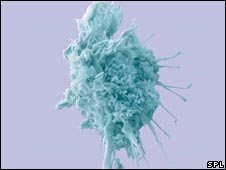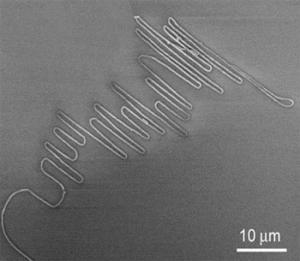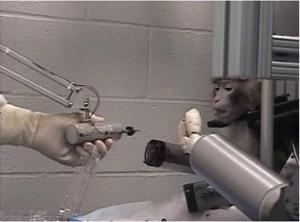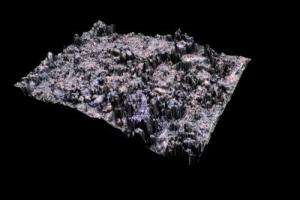
Japanese woman caught living in man's closet
news by Yahoo : http://news.yahoo.com/s/ap/20080530/ap_on_re_as/japan_closet_woman
TOKYO – A homeless woman who sneaked into a man’s house and lived undetected in his closet for a year was arrested in Japan after he became suspicious when food mysteriously began disappearing.
Police found the 58-year-old woman Thursday hiding in the top compartment of the man’s closet and arrested her for trespassing, police spokesman Hiroki Itakura from southern Kasuya town said Friday.
The resident of the home installed security cameras that transmitted images to his mobile phone after becoming puzzled by food disappearing from his kitchen over the past several months.
One of the cameras captured someone moving inside his home Thursday after he had left, and he called police believing it was a burglar. However, when they arrived they found the door locked and all windows closed.
“We searched the house … checking everywhere someone could possibly hide,” Itakura said. “When we slid open the shelf closet, there she was, nervously curled up on her side.”
The woman told police she had no place to live and first sneaked into the man’s house about a year ago when he left it unlocked.
She had moved a mattress into the small closet space and even took showers, Itakura said, calling the woman “neat and clean.”
Samsung Set to Introduce 200MB/sec Read, 160MB/sec Write 256GB SSD
Source: Dailytech

Compact Flash CF Mirroring / Spanning to 2.5” SATA Enclosure
Mars Phoenix Lander Touches Down
Source: Dailytech
After a few terrifying moments on Sunday, NASA scientists received signals from the Phoenix spacecraft. It had landed safely on the surface of Mars.

Cancer vaccine target pinpointed
Source: BBCNews
Scientists may be one step closer to producing a specific targeted vaccine for killing cancer cells.
UK researchers have pinpointed a protein on immune cells which they hope will help them harness the body’s defences to attack a tumour.

Chaotic Nanotubes Assemble Orderly Structures
Source: Dailytech
Researchers, led by Dr. Ernesto Joselevich, at the Weizmann Institute have been experimenting with self-assembling nanostructures using the popular carbon nanotube. Carbon nanotubes are not easy to produce in usable forms. Joselevich’s team used an approach known as “order through chaos” on groups of nanotubes and were successful in producing complex structures.
“It may seem paradoxical – trying to create order through chaos – but in fact, this a common phenomenon on the macroscale. Systems affected by forces that fluctuate from one extreme to another tend to self-organize into much more complexly ordered structures than those in which the external forces are ‘calm.’ We applied this principle at the nanoscale to see if it would have the same effect, and indeed, it did,” said Joselevich in a press release.

Another Nanoparticle Cancer Treatment
Source: Dailytech
Researchers at Brown University have created a similar cancer treatment nanoparticle from the same components as MIT’s nanoworms, iron oxide nanospheres. There are a few things that set the two agents apart, however. Where MIT’s nanoworms are composed of eight iron oxide spheres coated with a polymer derived from complex sugar molecules, Brown’s nanoparticles do their job as single units.
Rather than using a polymer coating and attaching cancer-seeking peptides and toxins to it, Brown’s nanoparticle simply uses a peptide coating called RGD to attach the particles to tumor cells. They found that RGD attaches seamlessly to brain tumor cells known as U87MG in mice. Another advantage over standard MRI contrast agents is that the peptide coating is a mere two-nanometers thick, versus the 20 nanometer coatings used on agents like Feridex. The ultra-thin coating allows the iron oxide spheres to shine like beacons on MRI scans, showing much more brightly than widely used agents currently do.

Engineers Develop Self-healing Process for Composite Aircraft
Source: Dailytech
Aerospace engineers from Bristol University have developed a new method to complement routine visual inspections of commercial aircraft made from composite materials such as the Boeing 787 Dreamliner.
The researchers have devised a way to fill the hollow parts of composite aircraft with a self hardening resin. When the airframe is damaged the resin would bleed out of the hollow spaces into the crack and seal the damaged area with enough strength to maintain flight and safely land. The engineers also say that future aircraft could have the resin moving continuously through a circulatory system built-in to the airframe.


A linux cluster in a IKEA Helmer cabinet
Source: http://helmer.sfe.se/
Monkey Merges With Machine, Uses Robotic Arm to Perform Tasks
Source: Dailytech
An outlandish experiment is breaking exciting ground in the world of brain controlled prosthetics

How to get Linux gurus to help you
Someone pasted this funny log in irc:
[dm] I discovered that you’d never get an answer to a problem from Linux Gurus by asking. You have to troll in order for someone to help you with a Linux problem.
[dm] For example, I didn’t know how to find files by contents and the man pages were way too confusing. What did I do? I knew from experience that if I just asked, I’d be told to read the man pages even though it was too hard for me.
[dm] Instead, I did what works. Trolling. By stating that Linux sucked because it was so hard to find a file compared to Windows, I got every self-described Linux Guru around the world coming to my aid. They gave me examples after examples of different ways to do it. All this in order to prove to everyone that Linux was better.
[dm] So if you’re starting out Linux, I advise you to use the same method as I did to get help. Start the sentence with “Linux is gay because it can’t do XXX like Windows can”. You will have PhDs running to tell you how to solve your problems.
Scientists create microscopic noodle bowl using nanotechnology
Source: JapanToday
TOKYO —
Japanese scientists say they have used cutting-edge technology to create a noodle bowl so small it can be seen only through a microscope.
Scientists Find Superconductor that is Virtually Immune to Magnetism
Source: Dailytech
A new breakthrough from scientists has found a unique class of superconductors which seem to be amazingly almost completely immune to magnetism. This is a significant breakthrough as it could remove one of the largest obstacles to commercializing superconducting.



Recent Comments